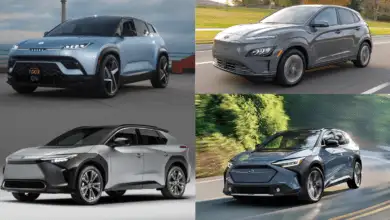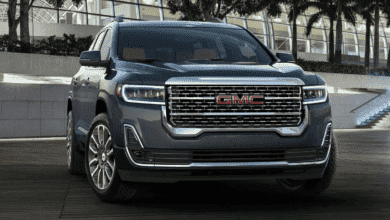Hyundai Ioniq 5 N 2025 Preview
Hyundai IONIQ 5 N- 2025 Preview with 641 Horsepower
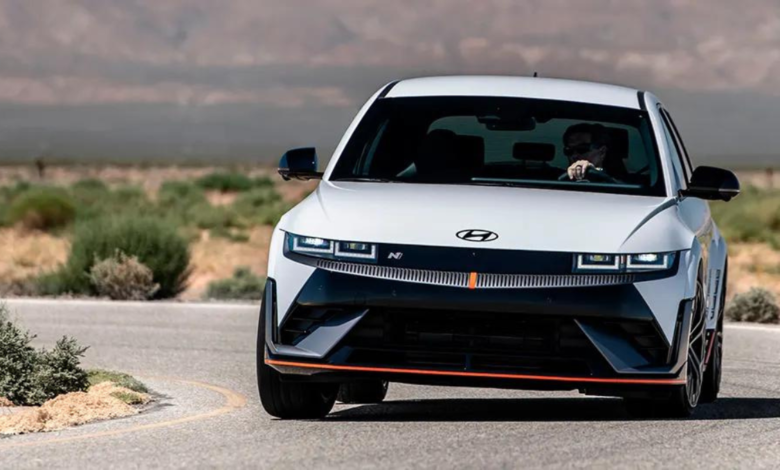
The 2025 Hyundai Ioniq 5 N, the first wholly electric Hyundai N vehicle, has finally arrived after dangling a tantalizing electric trio of “rolling labs” since 2020: the RM20E, RM22E, and N Vision 74. The formal U.S. premiere will be tomorrow at the Los Angeles Auto Show, despite prototypes speeding around courses from Namyang to the Nürburgring since it broke cover during the summer. Expanding upon those race-focused ideas, the Ioniq 5 N fits significant track-day technology and up to 641 horsepower into the recognizable form of the everyday Ioniq 5.
Hyundai’s former N models—the now-cancelled Veloster N, the currently-available Kona N, and the reasonably priced Elantra N—were fun to drive but required gasoline. The goal of the Ioniq 5 is to replicate their happy experience in an electric form—something that hasn’t always come naturally to E.V.s. Except for the Porsche Taycan, few E.V.s have been tuned for drivers who like to track their street cars. Even though many E.V.s deliver blinding acceleration and torque comparable to a locomotive, they sometimes lack the steering input and chassis refinement that fans yearn for.
To address this, the Ioniq 5 has undergone extensive modifications to its suspension, brakes, battery system, and chassis. Its retro-futuristic design, colour scheme, standard all-wheel drive (AWD) setup, and what Hyundai calls “rally-inspired handling” make it resemble the carmaker’s hybrid-powered i20N World Rally Championship (WRC) vehicles as well as a contemporary take on a beloved non-Hyundai WRC vehicle from the past, the Lancia Delta Integrale. Although that’s high praise, Hyundai has earned it by going above and above.
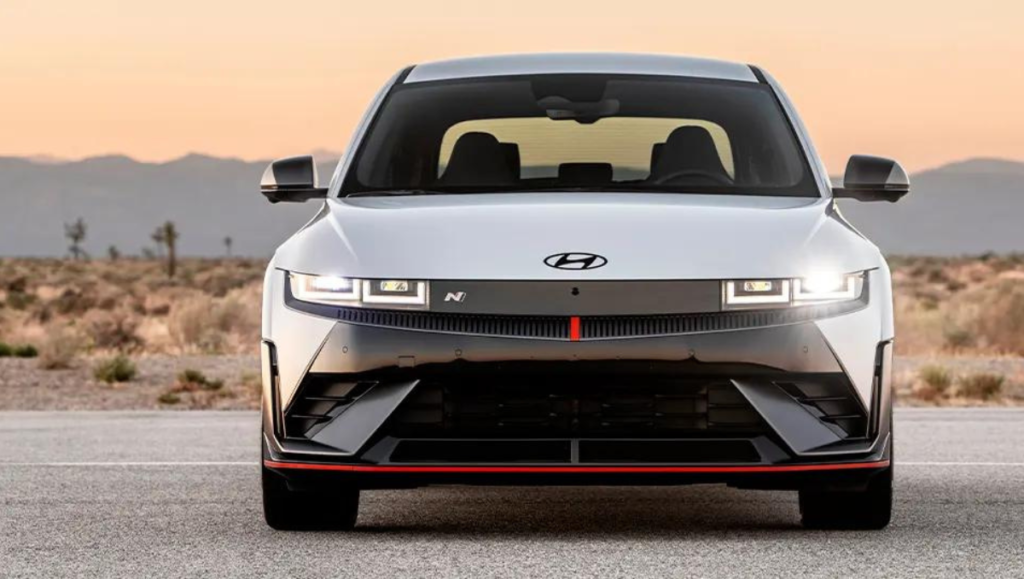
Engineering in Hyundai Ioniq 5 N
According to Hyundai, N Performance’s “three pillars” are “everyday sportscar, racetrack capability, and corner rascal.” Though the first may seem like a cut-out extra from a Wile E. Coyote cartoon, maybe more technical work than on any other N vehicle has gone into making this one a true cornering rascal.
A carmaker is serious about speed when they declare that performance improvements begin with the “body in white” or the car’s unpainted but constructed metal shell. This is because it’s the best method to strengthen the vehicle for greater dynamic loads. The body of the ordinary version of the Ioniq 5 N receives 6.9 feet of structural adhesives and 42 more welds. Structural reinforcement is applied to the drive axles, the front and rear subframes, and the mountings for the motor and battery.
Hyundai refers to the steering system on the N as an R-MDPS (Rack-Mounted Motor-Driven Power Steering). Compared to the regular Ioniq 5 arrangement, this automatically adjusts to torque output, providing more communicative steering and a faster ratio.
The car’s massive 15.75-inch front and 14.20-inch rear brake rotors, assisted by lightweight monobloc callipers with four pistons up front, help stop it. Despite this, the electric motors are designed to accomplish most of the stopping (reducing fade from the friction brakes). In N Regen mode, a software-based track optimization that may be selected can provide up to 0.6g of deceleration force. The lightweight 21-inch wheels have Pirelli P Zero 275/35 tires mounted.
There are several more N modes, such as N Pedal and N Drift Optimizer, in addition to N Regen. The former is intended to lessen the battery’s weight and mimic the WRC i20N’s turn-in and throttle response performance more closely than the Ioniq 5 standard. For drifting, the latter mimics the clutch-kick motion of gas-powered rear-drive vehicles.
The driver may adjust the front and rear torque distribution to eleven levels using a new N Torque Distribution technology. Additionally, the rear axle has an electronic limited-slip differential (e-LSD). The car’s electronically controlled suspension dampers provide a wide range of settings and possibilities, making it possible to ride reasonably softly on the street and as rigid as a board on the racetrack.
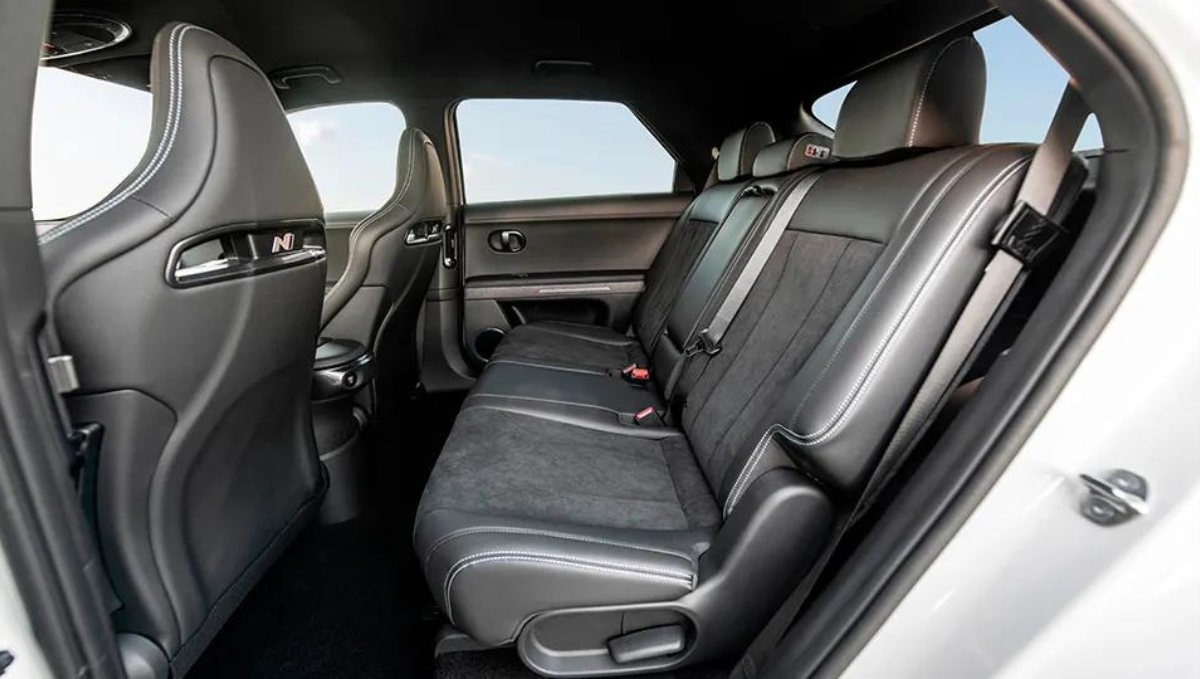
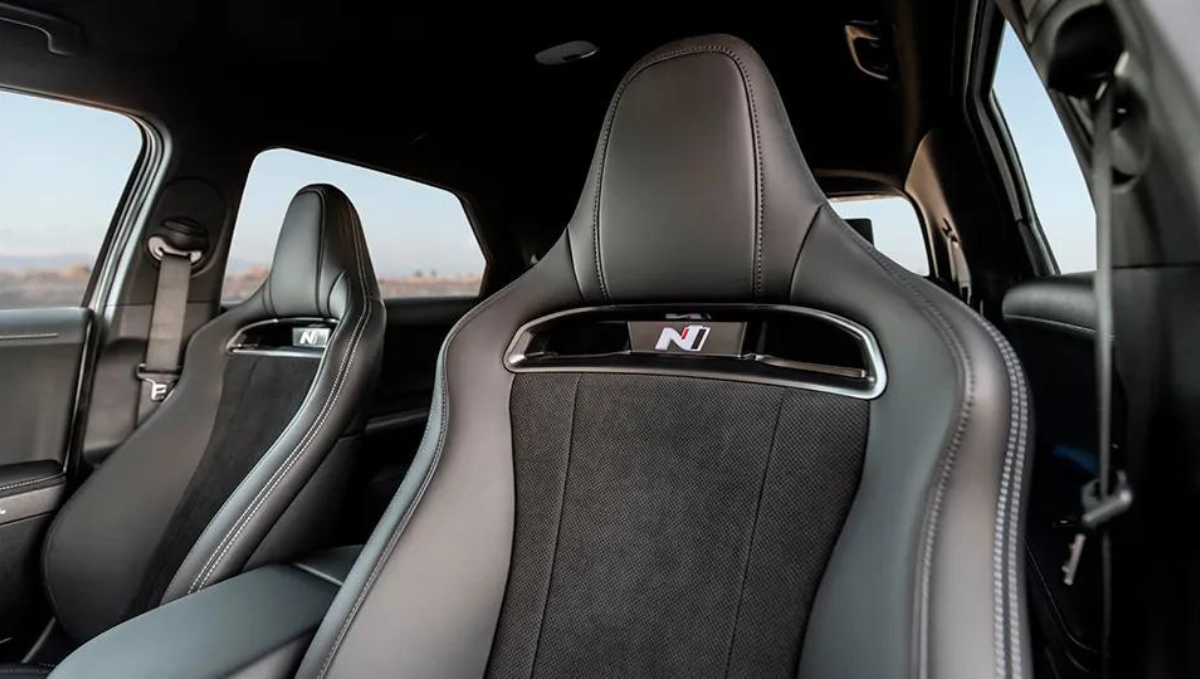
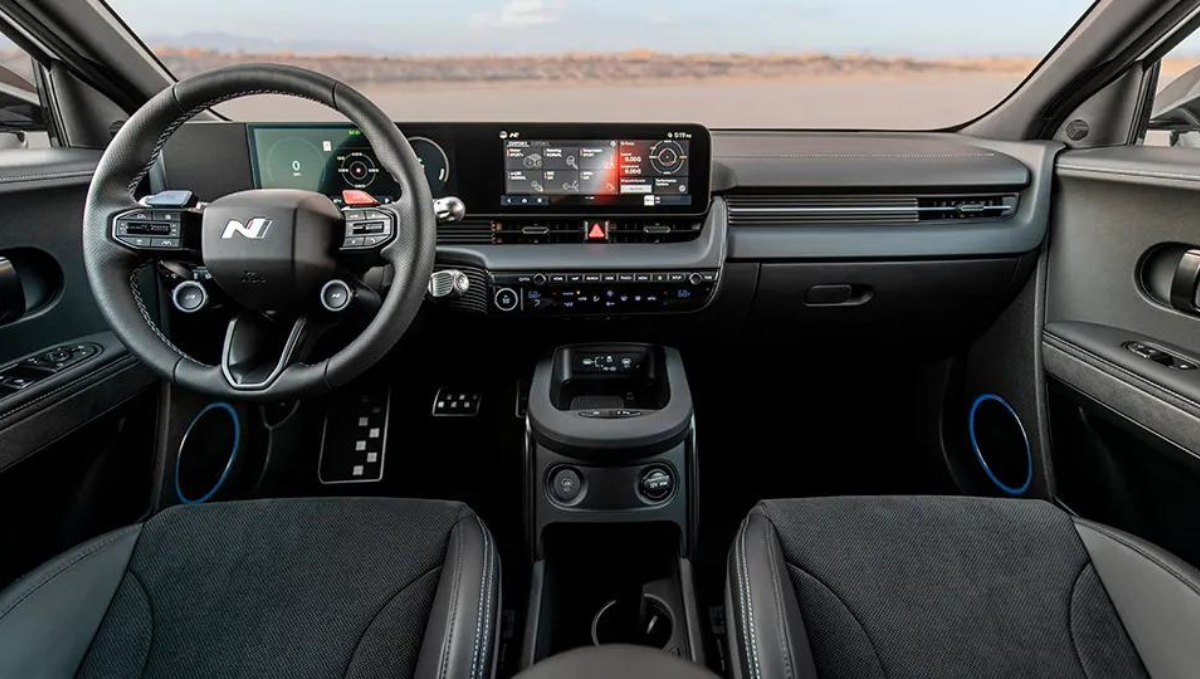
Hyundai Ioniq 5 N: Charging, Battery Technology, and Power
The two electric motors of the Ioniq 5 N have a total spin speed of 21,000 rpm, resulting in 601 system horsepower (223 from the front axle and 378 from the rear). However, when you press the “N Grin Boost mode” button, power surges to 641 horsepower in 10-second bursts, much like the GV60 and GV70 from Genesis and the EV6 GT from Kia, which also share some of the same smile-inducing gear. Hyundai claims that with launch control and N Grin Boost engaged, the vehicle will reach 60 mph in 3.25 seconds.
An 84 kWh battery, somewhat more significant than the long-range Ioniq 5, provides power. The 800-volt design would benefit rapid D.C. fast charging on a racing day, much like the primary vehicle. However, 350-kW fast chargers are not often seen at racetracks these days. Hyundai hasn’t disclosed the Ioniq 5 N’s range, but considering its focus on performance, it doesn’t appear likely to surpass the standard models’ more fantastic range.
However, it’s not about maximum range here, and the carmaker adjusted the battery’s electron management to better suit track day warriors. Separate radiators cool the battery pack and the oil within the motors. By optimizing the battery cells to the most power-efficient temperature, the driver may pre-condition the battery pack thanks to its thermal management system, which reduces the heat transfer path from the battery cells to the cooling channel.
Drivers can choose between two energy-consuming modes while on the track: “Endurance” and “Sprint.” As its name suggests, the former optimizes the track range by preventing heat accumulation at the expense of instantaneous thrust. At the same time, the latter offers full-bore exhilaration at a shorter duration.
Additionally, N e-shift, a driver setting, may be more contentious. This is not a wholly emulated manual gearbox since Toyota is still working on it; instead, it is designed to resemble the gas-powered N vehicles’ eight-speed dual-clutch automatic, which the manufacturer claims allows for a more engaging driving experience. The Ioniq 5 N also has a simulated soundtrack and authentic electrical and realistic engine noise.
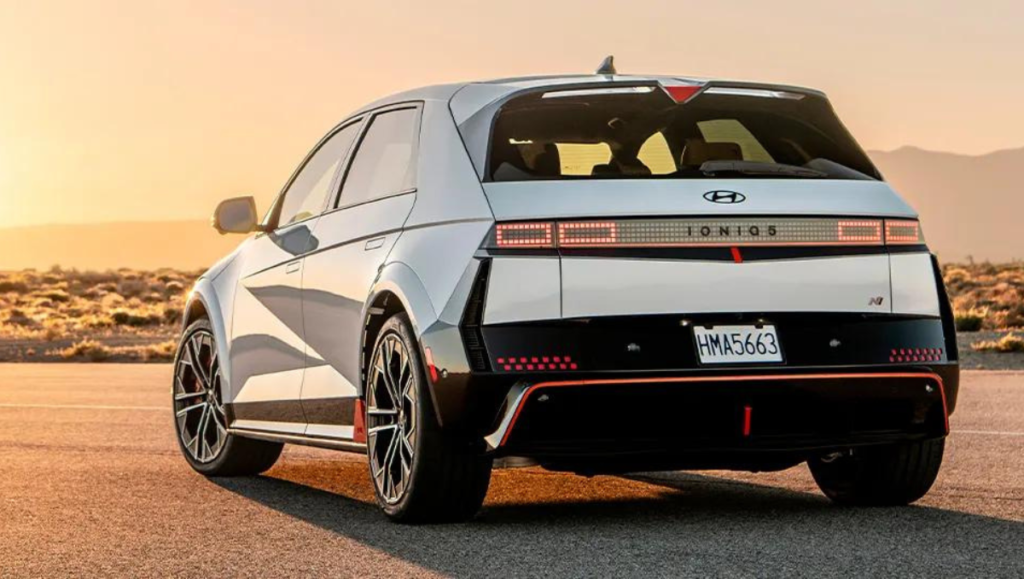
The N-Integrale Look
Although comparing the Ioniq 5 N to the Lancia Delta Integrale may seem odd, there is some genuine design DNA between the two. The general styling of the Ioniq 5 is greatly influenced by Giorgetto Giugiaro’s 1974 Pony, Hyundai’s first in-house design. Similar concepts also influenced the creation of the Lancia Delta in 1979. The 1974 Hyundai Pony coupe concept, which inspired the N Vision 74 idea, included some of the same components as another design by the Italian maestro this year—the DeLorean.
The middle-class but uninteresting front-drive Delta grew in the late 1980s and developed into the turbocharged AWD WRC-champ Integrale. In the 1990s, considerable cosmetic changes appeared on the car, primarily spoilers and flares. Additionally, the Ioniq 5 N receives a comparable aesthetic makeover. The Ioniq 5 is 0.8 inches shorter than the standard model. The massive air-diffusing rear bumper and flared fenders provide an additional 2.0 inches to its width and 3.2 inches to its total length. Under the recognizable blacked-out N front fascia are a lip spoiler, side skirts, and a massive rear wing.
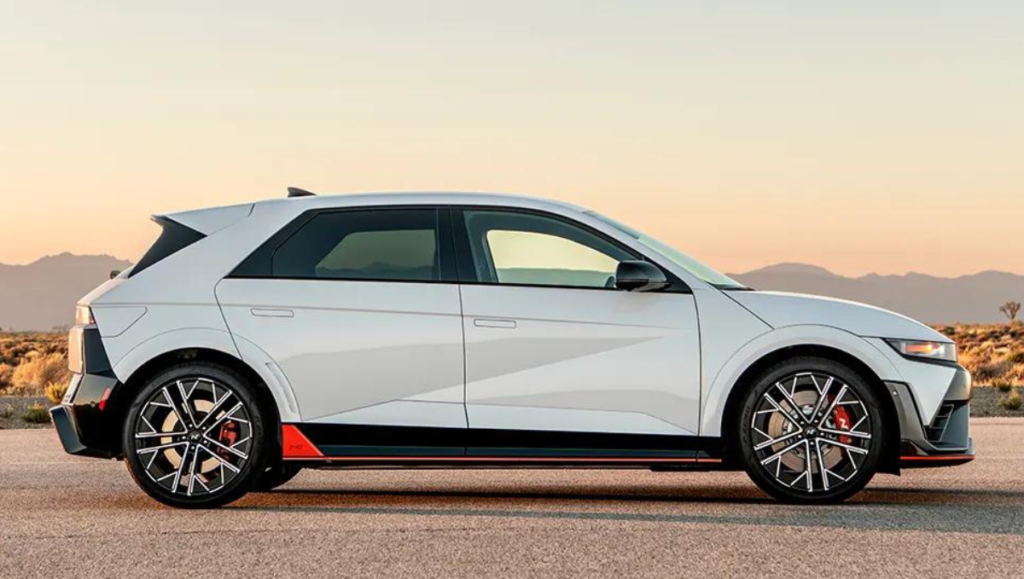
There are also adjustments inside. With knee padding and shin support, the centre console is designed for track driving. Some structural strengthening is hidden under the console’s surface. The regular Ioniq 5 chairs are 0.8 inches higher than the standard sports seats, which resemble those in a BMW M4 Competition. The driver may brace himself using the footrest and high-grip pedals for further stability during severe braking.
There are several options for all the settings on the steering wheel, which was specifically made for the Ioniq 5 N and isn’t shared with other Hyundai vehicles—at least not yet. The N, however, retains every feature of the standard Ioniq 5, including the excellent infotainment system, the wireless charging tray, and the same spacious rear seat. However, the back seat does not have the same aggressive bolstering as the front seats.
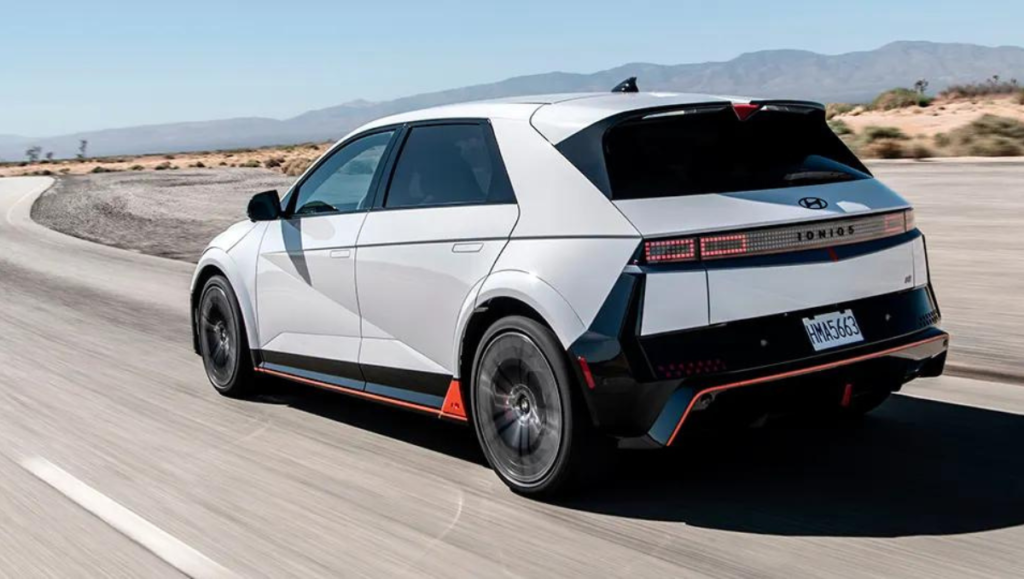
When and How Much Is the Hyundai Ioniq 5 N?
The answer to “how much” is still up in the air since Hyundai has never produced a car exactly like this, despite certain similarities with the related EV6 GT. The preceding N models were more expensive than non-N versions, even though the Kona N was reasonably priced. Since the top-of-the-line Ioniq 5 Limited begins at around $55,000, it is reasonable to assume that the Ioniq 5 N will cost somewhere in the mid-60,000s. The N model has even more specialized technology than the gas-powered Ns.
But at least we know when. In March 2024, Ioniq 5 Ns will begin to arrive at dealerships, and they’ll probably be just as popular there as they will be at the racetrack.

